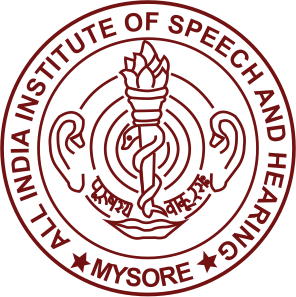| DC Field | Value | Language |
|---|
| dc.contributor.author | Khurana, Sarika | - |
| dc.contributor.author | Prema, K S | - |
| dc.date.accessioned | 2020-12-11T10:21:03Z | - |
| dc.date.available | 2020-12-11T10:21:03Z | - |
| dc.date.issued | 2009 | - |
| dc.identifier.issn | 0973-662X | - |
| dc.identifier.uri | http://203.129.241.91:8080//handle/123456789/2067 | - |
| dc.description.abstract | Story retelling has been used to evaluate the oral narratives of preschool children. Assessment of oral language abilities in preschoolers is essential for identifying children at risk for reading difficulties in later grades. The purpose of the present study is to evaluate the development of story re-tell abilities in preschool children with native language Kannada studying in schools with English as the medium of instruction, in Mysore city. The subjects consisted of 30 participants in the age range of three to six years, enrolled in Pre-kindergarten, Lower Kindergarten and Upper Kindergarten. The children were narrated a story in English using a wordless picture book and asked to re- tell the story. Their narratives were audio recorded, transcribed, segmented into C-units and analyzed using the SALT software. The narrative measures employed to evaluate the expressive language were Number of English Words (NEW), Number of Kannada Words (NKW), Number of Proper Nouns (NPN), Mean Length of Utterance (MLU), Number of Different Words (NDW) and Type Token Ratio (TTR). Comprehension abilities were assessed using a Question-Answer Task (QAT). The results indicate that both expression and comprehension abilities show an upward developmental trend in preschoolers. Their narratives were dominated by Kannada utterances in Pre- Kindergarten but in Lower Kindergarten and Upper Kindergarten, their narratives showed dominance of English utterances. Measures such as MLU, NDW and TTR were not sensitive to the developmental changes in preschool narratives whereas measures such as NEW, NKW and NPN showed significant difference between groups. The results of the present study indicate that measures such as MLU, NDW and TTR should be used with caution while evaluating language samples with less than 50 bilingual utterances. | en_US |
| dc.language.iso | en | en_US |
| dc.subject | Oral narratives | en_US |
| dc.subject | MLU | en_US |
| dc.subject | NDW | en_US |
| dc.subject | TTR | en_US |
| dc.subject | SALT software | en_US |
| dc.title | Story Re-tell Abilities in Preschoolers Development in Kannada- speaking English Language Learners | en_US |
| dc.type | Article | en_US |
| dc.journalname.journalname | Journal of All India institute of Speech and Hearing | en_US |
| dc.volumeno.volumeno | 28 | en_US |
| dc.pages.pages | 103-114 | en_US |
| Appears in Resource: | Journal Articles
|

